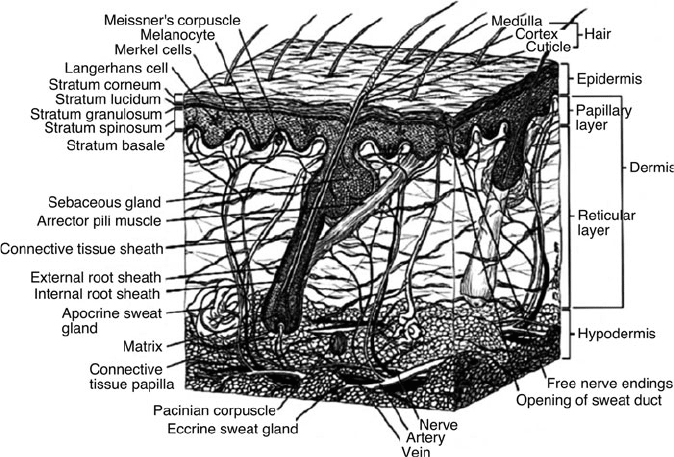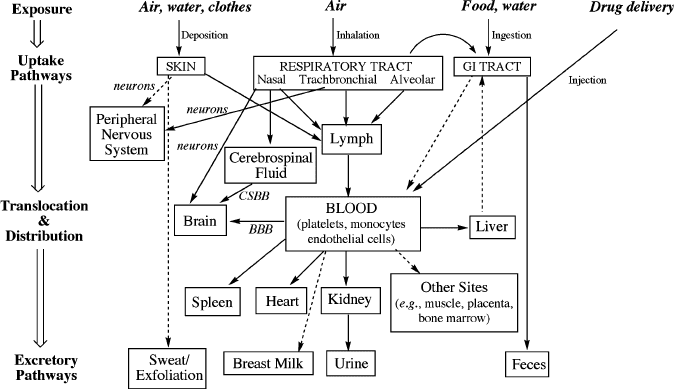Fahlman B.D. Materials Chemistry
Подождите немного. Документ загружается.

– National Cancer Institute Alliance for Nanotechnology in Cancer (Bethesda, MD),
http://nano.cancer.gov/
– ASME Nanotechnology Institute (New York, NY), http://nano.asme.org
– Nanotechnology Institute (Philadelphia, PA), http://nanotechinstitute.org
– Center for Nanoscale Chemical–Electrical–Mechanical Manufacturing Systems
(Urbana, IL), http://www.nano-cemms.uiuc.edu/
– Nano/Bio Interface Center (University of Pennsylvania), http://www.nanotech.
upenn.edu/
– Center for Nanotechnology in Society (University of California, Santa Barbara),
http://www.cns.ucsb.edu/
– Center for Nanote chnolo gy in Society (Arizona State University), http://cns.asu.
edu
– The NanoTechnology Group, Inc. (Nanoscience educational outreach, Wells,
TX), http://www.tntg.org/
– Nanotechnology Law Report (Washington, D.C.), http://www.nanolawreport.com/
– The Foresight Institute (Palo Alto, CA), http://www.foresight.org
– The Institute for Soldier Nanotechnologies (Massachusetts Institute of Technology),
http://web.mit.edu/isn/aboutisn/index.html
The first nationa l network focused on the design/fabrication/testing of nanoma-
terials was instituted in 2004 through funding from the National Science Foundation.
The National Nanotechnology Infrastructure Network (NNIN) consist s of a con-
glomerate of 14 sites across the country (Figure 6.1) that are focused on all aspects
of nanomaterials. Since “nanotechnology” is such an interdisciplinary field, many
more nano-related research centers will likely be instituted in the near future.
However, as with all scientific disciplines, a major roadb lock toward research
progress in the U.S. is domestic student recruitment. There are a declining number
of degrees awarded in the sciences within recent years (from B.S. to Ph.D. levels) in
the U.S., relative to other foreign countries (e.g., China, India). This represents
an ominous forecast that our advanced technology and warfare capabilities will
greatly lag behind other countries, threatening our everyday way of life and the
“superpower” status long enjoyed by the U.S.
The introduction of a new architecture such as nanomaterials necessitates the need
for new terminology and methods of classification and characterization. We must also
understand the mechanisms by which individual nanostructures may assemble into
larger materials, as this will greatly affect the properties of the bulk device for a
particular application. This chapter will focus on all of these important issues, with an
introduction to the various types of nanomaterials, laboratory techniques used for their
synthesis, and (perhaps most importantly) their role in current/future applications.
6.1. NANOTOXICITY
As exciting as the futuristic applications may sound, is it possible that such techno-
logical growth may be associated with dire societal consequences? In Eric Drexler’s
book “Engines of Creation,”
[3]
it was forecasted that self-replicating nanomachines
would take over all life on Earth! Although that notion is far from reality, there may
458 6 Nanomaterials

be more serious issues that arise through introduction of nanomaterials into the
biosphere. Since we haven’t yet determined the extent of long-term effects that may
arise from the widescale introduction of nanoscale materials, are we on the verge of
upsetting the natural balance in ways that cannot be overturned?
History has revealed that chemistry is a two-edged swo rd, with benefits that
greatly imp rove our lives but also negative consequences for human health and
our environment. For example, think of the chlorofluor ocarbons (CFCs) that were
once used for refrigerants. Their discovery was heralded as one of the greatest
triumphs of modern science. Alas, many years after their worldwide adoption,
it was realized that they contributed to the ozone hole and likely increase in the
incidences of skin cancer. Likewise, emissions from factories and automob iles were
not considered as problematic many years ago, but we are now aware of the
destructive consequences of these sources (e.g., acid rain and global warming –
the leading cause of catastrophic changes in our climate/weather patterns).
The number of engineered nanostructures is expanding at an astounding pace.
Nanomaterials are already used in a diverse range of products such as cosmetics,
electronics, sporting equipment, fuel catalysts, food additives, paints, drug-delivery/
biomedicine, ultrafiltration, stain-/wrinkle-free textiles, scratch-resistant coatings, and
many more. With so many stakeholders in the nanotechnology arena who stand to
make a lot of money from commercial products,
[4]
it is no wonder why the technologi-
cal innovation has far surpassed nanotoxicity studies. In fact, it is estimated that only 3–
5% of nanotechnology research funding is currently being spent on determining the
potential health and environmental impacts of nanomaterials. Most of the early work
Figure 6.1. The 14 sites of the National Nanotechnology Infrastructure Network. Reproduced from
http://www.nnin.org.
6.1. Nanotoxicity 459

has taken place in the European Union,
[5]
with the assessment of toxicological/
environmental consequences of nanoscale materials via comparisons to known
contaminants such as colloids, aerosols/smoke/soot particulates, and asbestos.
As we will see later in this chapter, not only is one able to alter a nanostructure
by the types of atoms and their stoichiometries, but also their 3-D arrangement.
With such profound nanostructural variety, it is no wonder that standardized
toxicokinetics studies (i.e., absorption, distribution, metabolism, and excretion
characteristics) are still greatly lacking. For this to occur, there is a need for reference
nanomaterials that would allow a systematic ‘structure vs. toxicity’ assessment for
various classes of nanostru ctures. To date, the only commercially-available reference
materials are spherical nanoparticles that are used to calibrate particle-size analyzers.
Such reference materials will only be possible once we have standardized protocols
for the synthesis and characterization of various types of nanomaterials, an active
area of investigation at the National Institute of Standards and Technology (NIST).
The toxicity and fate of a nanostructure (Figure 6.2) is governed by physical
properties such as its size distribution, morphology, degree of agglomeration,
specific surface area, crystallinity, and aspect ratio. The size reduction of a bulk
material to the nanoregime results in an exponential increase in its surface:volume
Figure 6.2. Some possible exposure routes for nanostructures based on current/potential applications.
Reproduced with permission from “Nanoscience and Nanotechnologies: Opportunities and Uncertainties”,
Nanoscience and Nanotechnologies, July 2004. Copyright the Royal Society 2004.
460 6 Nanomaterials
ratio. Hence, nanoparticles are generally more toxic than larger particulates of the
same insoluble material (on a mass dose basis), since relatively more molecules of
the material are available on its surface thus enhancing its intrinsic toxicity.
[6]
In addition, chemic al properties that govern overall reactivity and solubility also
contribute to nanotoxicity such as purity, atomic composition/structure, and surface
chemistry (e.g., charge, reactive/defect sites, functionalization, protective coating).
[7]
The most common exposure routes for nanostructures are inhalation, ingestion,
and uptake through the skin; intravenous injection may also be used for medical
purposes (e.g., drug-delivery). The following represent some important questions
that are currently being investigated, along with recent data
[8]
:
(i) What is the danger of exposure to nanomaterials via skin absorption, ingestion,
or inhalation routes?
The first news report on the potential damaging effects of nanoscale materials
surfaced about a decade ago, when TiO
2
/ZnO nanoparticles from sunscreen
were found to cause free radicals in skin cells, damaging DNA.
[9]
Since then,
there have been an increasing numb er of such reports suggesting that nanos-
tructures are able to traverse across membranes in the body, with an increasing
toxicity with decreasing nanoparticulate dimensions. Perhaps the most widely
reported study surfaced in mid-2004, where it was shown that fullerenes, a
nanoscale allotrope of carbon, cause brain damage in aquatic species.
[10]
Skin Absorption
Skin represents the largest organ in our bodies, and serves as the first stage
of protection against the uptake of airborne and/or solubilized contami-
nants from our surroundin gs. There are three layers that comprise skin: the
epidermis, dermis, and hypodermis; the outermost layer of the epidermis
is referred to as the stratum corneum (Figure 6.3), and consists of dead
cells that are strongly keratinized. However, o nce particulates are able to
diffuse across this barrier (known as percutaneous penetration), absorption
through underlying skin layers may take place. If resorption takes place, the
compound is taken into the vascular system (lymph and/or blood vessels) and
is delivered to organs system-wide. It has been shown that nanomaterials have
a greater risk of being absorbed through the skin than larger particulates.
[11]
Though the therapeutic absorption of nanoparticles through skin would
be desired for drug-delivery applications, we need to identify the health
risks posed by unintentional absorption of nanostructures through the
skin; for instance, involving personnel active in nanomaterials synthesis/
characterization.
The structural diversity of nanostructures equates to amazingly complex uptake/
absorption profiles through skin – much more so than bulk chemical agents
(e.g., organic/inorganic liquids, solutions, gases, etc.), of which have pre-
dictable diffusion/absorption profiles. Nanostructures may move between
individual cells of the stratum corneum (intercellular), through cells (trans-
cellular), or through the hair follicle or sweat ducts (transappendageal).
[12]
6.1. Nanotoxicity 461

Thus far, in vivo (living organism) diffusion-based studies have been per-
formed on pig skin, since it represents the closest match to humans.
In contrast, in vitro (tissue/cell) testing is used to determine the starting
dose for in vivo toxicity assays.
To date, the greatest skin exposure to nanostructures is from prolonged contact
with over-the-counter pharmaceutical and cosmetic formulations (Table 6.1).
Fullerenes (carbon clusters such as C
60
,C
70
, etc. – discussed later) are present
in a n umber of these products, as well as other therapeutic agents that exploit
their inherent phototoxic properties.
[13]
Water-soluble aggregates of C
60
may exhibit significant cytotoxicity even at concentrations as low as
20 ppb; however, fullerenes with different surface functionalization (e.g.,
Na
2–3
+
[C
60
O
7–9
(OH)
12–15
]
(2–3)
and C
60
(OH)
24
) are significantly less cyto-
toxic.
[14]
The toxicity of C
60
-based nanostructures is thought to arise from the
degree of oxygen radicals generated, which is less pronounced for more
heavily derivatized (and water-soluble) fullerenes. Amino acid functionalized
fullerenes have also been shown to penetrate the outer layers of flexed or
imperfect skin (not intact skin).
[15]
In fact, the relationship between nanopar-
ticulate absorption and mechanical flexing is likely responsible for the high
onset of podoconiosis in u nprotected feet that come into contact with certain
soils that have high concentrations of Be and Zr.
[16]
Figure 6.3. Cross-section illustration of skin. Reproduced with permission from Monteiro-Riviere, N. A.
Comparative Anatomy, Physiology and Biochemistry of Mammalian Skin” in Dermal and Ocular
Toxicology, Hobson D. W., ed. Boca Raton: CRC Press, 1991.
462 6 Nanomaterials

Inorganic-based nanocrystals such as quantum dots (QDs)
[18]
and TiO
2
[19]
have
also been shown to penetrate the human stratum corneum and hair follicles,
which may further interact with the immune system.
[20]
Most importantly, it
has been demonstrated that QDs are able to penetrate intact skin, without the
assistance of any mechanical stressors.
[21]
The lipid layers within the cells of
the stratum corneum are thought to form a pathway for the migration of
nanoparticles into the skin, which may then be sequestered (phagocytized) by
the Langerhans cells.
[22]
However, surface-functionalized QDs have also
been noted to exhibit significant penetration to the highly vascularized der-
mis, offe ring a route for systemic absorption.
[21]
In fact, it is believed that the
dermal translocation of nanoparticulates may follow the same pathway(s) as
viruses such as Herpes, which closely interact with the peripheral and central
nervous systems. However, there are other contradictory studies that have
shown that metallic nanoparticles read ily penetrate the stratum corneum and
hair follicles, but not beyond the epidermis in full-thickness human skin
studies.
[23]
It should be noted that high aspect ratio nanostructures such as
carbon nanotubes have also been shown to be absorbed within human epider-
mal kera tinocytes, giving rise to an irritation response.
[24]
However, there are
currently no reports of pronounced dermal migration of these nanostructures.
Inhalation or Ingestion
The danger of unintentional inhalation of nanostructures is not limited to work-
ers and researchers specifically involved in nanotechnology-related fields.
In fact, there are a surprisingly large number of nanoparticles in our ambient
atmosphere, reaching as high as 10
6
–10
8
nanoparticles/L of air in both urban
Table 6.1. List of Nanostructures Commonly Present in Cosmetics Formulations
[17]
Fullerenes
Anti-aging cream, around-eye cream
Vitamin Nanocapsules or Nanosized Vitamins
After-sun products, bronzer/highlighter, sunscreen/tanning oil
Nanosized ZnO and/or TiO
2
(coated or uncoated with dimethicone)
Anti-aging cream, blush, bronzer/highlighter, concealer (also may contain Al nanoparticles), anti-itch
cream, diaper cream, eye shadow, foundation, lip balm, sunscreen/tanning oil
Nanosomes (e.g., sodium lactate, calendula, witch hazel, ginseng, urea, vitamins (A, E, B5),
a-bisabolol, germal (II))
Anti-aging cream, body-firming lotion, concealer, body wash/cleanser
Nanosized Liposomes
Anti-aging cream, around-eye cream, facial moisturizer
Nano-delivery system
Facial moisturizer, body-firming lotion
Lyphazome nanospheres
Around-eye cream, moisturizer, nail treatment
Nanosized Minerals (e.g., rose quartz, talc, topaz)
Concealer, exfoliant/scrub, facial cleanser, facial moisturizer, foundation, glitter, lip gloss, lipstick, mask,
sunscreen/tanning oil
6.1. Nanotoxicity 463

(e.g., automobile exhaust, building-material particles) and rural (e.g., dust,
diesel exhaust, combustion of wood, waste, etc.) areas.
[25]
Diesel exhaust
emissions are comprised of a wide distribution of particle sizes, with the bulk
of the particulates with dimensions <50 nm – well within the nano range.
However, even gasoline exhaust gases contain nanopart iculates, ranging from
1.9 10
14
to 9.9 10
14
particles.km
1
and 2.2 10
15
to 1.1 10
16
particles.
kg
1
fuel, with the greatest concentrations and smallest sizes associated with
high-speed road traffic.
[26]
Table 6.2 compares the number and size of
nanoparticles in a typical amb ient environment of a variety of workplaces.
It has been reported that nanoparticles may enter the circulation system of
rodents via the respiratory or gastro-intestinal tracts, which may then reach
other target sites such as the liver, spleen, heart or brain (Figure 6.4).
[28]
Regarding ingestion, smaller sizes of nanoparticulates resulted in higher
organ uptake, whereas larger agglomerates were found almost exclusively
within the GI tract.
[29]
Based on the limited data available thus far, it is likely
that size is the predominant factor that governs overall translocation of
ingested nanostructures, which must cross the GI tract barrier in order to
be distributed into the circulat ion system.
As one would expect, the extent of circulation through the body increases when
the nanostructures are functionalized with a hydrophilic and/or positively-
charged surface. In contrast, inhaled insoluble nanoparticulates mostly
remain in the lungs, which are then transported via mucociliary action to
the GI tract where they leave the body as fecal excr etion. Thus far, reports
indicate that only about 1% of inhaled nanoparticles are translocated from the
lungs across the air-blood barrier, being accumulated in secondary target
organs (liver, spleen, kidneys, heart, and brain) as well as in soft tissue and
bone. However, there are precedents of more extensive organ uptake (as
much as 10% of the administered dose) for small-diameter nanostructures,
with dimensions <10 nm.
[30]
A recent study has also shown that rat-inhaled
magnetic nanoparticles with relatively larg e diameters of 50 nm are still able
to penetrate the blood-testes and blood-brain barriers.
[31]
Other direct evi-
dence for translocation of metallic nanoparticles into the olfactory bulb from
nasal exposure in rats has also been demonstrated;
[32]
in one case, observed in
the brain up to 6 months after the inhalation exposure was administered.
[33]
Table 6.2. Comparison of Environmental Nanoparticles in a Variety of Workplaces
[27]
Workplace Nanoparticle concentration
a
(particles.cm
3
)
Average size (nm)
Silicon processing up to 100,000 280–520
Metal grinding up to 130,000 17–170
Soldering up to 400,000 36–64
Plasma cutting up to 500,000 120–180
Bakery up to 640,000 32–109
Airport field up to 700,000 <45
Welding 100,000–40,000,000 40–600
a
Particles within the 14–673 nm size range only.
464 6 Nanomaterials

Perhaps most interestingly, the human inhalation of diesel exhaust is reported
to give rise to changes in brain activity, as demonstrated by changes in EEG
signals.
[34]
More studies are needed to determine whether nanoparticle expo-
sure is a contributing factor in the relatively high onset of brain diseases
occurring throughout the world.
Everyone is familiar with the toxicological effects generated from the inhalation
of long fibrous materials such as asbestos. The form of cancer caused
by asbestos exposure is known as mesothelioma – responsible for ca. 3,000
deaths per year in the U.S. and significantly more in other countries such as
Britain, Australia and Belgium . Two recent reports have investigated the
toxicity of analogous high aspect ratio (i.e., length:diameter ratio) nanostruc-
tures known as carbon nanotubes (CNTs). Their studies showed that nano-
tubes induced mesothelioma in mice, with the greatest toxicity occurring as
the aspect ratio increased.
[35]
Another recent study by Pacurari et al. used
cultured mesothelial cells to show that CNTs induced the activation of
molecular-signaling pathways associated with oxidative stress, similarly to
asbestos.
[36]
In addition, surf ace functionalization of carbon nanotubes with
hydroxyl (—OH), carbonyl (C═O), and carboxyl (COOH) groups, as formed
during acid purification steps, has been shown to generate a greater cytotox-
icity than pristine analogues.
[37]
Figure 6.4. Scheme illustrating the absorption, translocation, and excretory pathways of nanostructures
within the body. The solid arrows indicate confirmed routes, whereas dashed arrows indicate potential
routes. BBB refers to the blood-brain barrier and CSBB is the cerebrospinal-brain barrier. Adapted from
Oberdorster, G. Nanoparticles (NP) and the Brain: Pathways of Translocations and Effects, International
conference on Nanotechnology, Cincinnati, Ohio, Dec. 7, 2006. May be accessed online at: http://
www.uc.edu/NOEHS/pdf/Thursday/Copy%20of%20Cincinnati%20NIOSoberdorsterH.pdf.
6.1. Nanotoxicity 465
In addition to size and surface-functionalization effects, there is also a com-
positional effect of nanoparticulates on their resultant toxicity. For instance,
the cytotoxicity of carbon black has been shown to be more severe than
that of titanium dioxide for identical particle sizes.
[38]
In addition, DuPont
researchers have recently found that TiO
2
nanoparticles were not increasingly
more toxic in rats than larger (micron-sized) particulates. Whereas both sizes
of TiO
2
gave rise to an inflammatory response that lasted only a week, quartz
nanoparticles were found to trigger a longer inflammatory response lasting for
months – again, not unlike micron-sized quartz particles.
[39]
What generates even more complexity is that nanoparticles may react with one
another in the atmosphere, generating complex aggregates that may exhibit
very different toxicity profiles than their original native compositions.
[40]
No wonder we are having trouble identifying a standard toxicity profile for
particular nanoparticles – we must consider their exact compositions, aggre-
gate size, surface structure /charge at the time of ingestion/absorption.
(ii) Do nanomaterials bioaccumulate?
The use of nanomaterials for drug-delivery and cancer-targeting applications
exploits their ability to localize within certain cells within the body. For
instance, coated magnetite nanoparticles were found within human
mammary carcinoma cells,
[41]
and we have already seen that functionalized
carbonaceous nanostructures (fullerenes, carbon nanotubes) may become
localized within human epidermal keratinocytes (HEKs).
[42]
Nanocrystals
known as quantum dots (QDs) feature a tunab le coating to improve their
aqueous solubility and facilitate the attachment of antibodies or other thera-
peutic/diagnostic moieties for cell imaging, immunohis tochemistry, and
cancer-targeting applications.
[43]
Depending on the type of coating present,
QDs have been shown to accumulate within a variety of human cells.
[44]
A recent report by Zh ang and Monteiro-Riviere provides the first mechanis-
tic insights for the uptake of quantum dots by cells, which is governed by
their size, surface coating and charge.
[45]
It is now recognized by the breadth of research studies that materials with low
solubility or degradation profiles may accumulate within biological systems
and persist there for long durations. Studies have shown that bacteria and
living cells are capable of taking up nanosized particulates,
[46]
which has
been recently acknowledged by the U.S. Environmental Protection Agency
(EPA) as ‘providing the basis for potential bioaccumulation in the food
chain’.
[47]
Further, the presence of nanoparticles has been shown to
enhance the bioaccumulation of other toxic materials such as Cd in aquatic
species.
[48]
A recent study has also demonstrated that nanostructures may
also be transferred to offspring, which may even affect future generations of
species.
[49]
There is also evidence that exposure to various nanostructures will result in
either direct (oxidative cellular stress) or indirect (inflam mation-mediated)
genotoxicity.
[50]
Their small size allows nanoparticulates to penetrate into
466 6 Nanomaterials

regions such as the mitochondria and nucleus of the cell, the latter of which
would yield direct intera ction with DNA. Recent studies have shown that
unmetabolized nanomaterials may resu lt in granulomas,
[51]
lesions (areas of
damaged cells or tissue),
[52]
and cancer.
[53]
There is also evidence from
animal studies that some nanoparticles can cross the placenta, posing
particularly significant risks to developing embryos.
[54]
However, even if
the nanoparticles are not able to cross blood-brain or placental barriers, there
still may be cellular damage. A new mechanism elucidated by Bhabra et al.
has shown that Co-Cr nanoparticles of ca. 30 nm diameter are able to cause
damage to human fibroblast cells, even across an intact cellular barrier.
[55]
(iii) What is the fate, transport, and transformation of nanosized materials after
they enter the environment?
Unfortunately, the majority of nanostructures currently in production for appli-
cations consist of non-biodegradable sub-units. Further, nanostructures
often exhibit a low solubility, may be transported long distances by wind,
water, and wildlife, and have a strong propensity to form aggregates. All of
these factors suggest that nanomaterials will have a lasting presence within
the environment. In general, the fate of a nanomaterial within an environ-
mental medium such as soil and water will be governed by the inherent
properties of the nanostructure discussed above, as well as its reactivity
with the particular medium that might affect its degree of agglomeration
transformation into a more or less stable material (Figure 6.5).
Figure 6.5. Possible nanoparticle modifications within the environment. Reproduced with permission
from Alvarez, P. J. J.; Colvin, V.; Lead, J.; Stone, V. ACS Nano 2009, 3, 1616. Copyright 2009 American
Chemical Society.
6.1. Nanotoxicity 467
